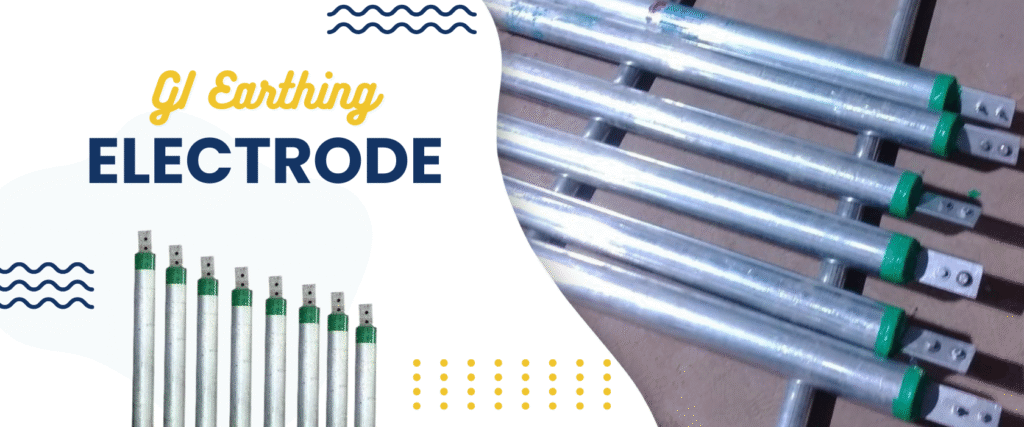GI Earthing Electrode
- Home
- GI Earthing Electrode

GI Earthing Electrode
Features & Benefits
🌟 Corrosion Resistance
Zinc galvanization provides protection against rust, moisture, and soil chemical reaction.
🌟 Longer Life Span
Galvanized coating ensures durability for 8–15 years depending on soil conditions.
🌟 Affordable and Efficient
More economical than copper-based electrodes with good conductivity.
🌟 Easy to Install
Lightweight and available in multiple sizes for quick setup.
🌟 IS Standards Compliant
Manufactured as per IS 3043 and other electrical safety codes.
🌟 Suitable for Normal Soil Conditions
Performs well in general residential, commercial, and semi-industrial environments.
Available Specifications
| Pipe Diameter | Length | Thickness | Terminal Size | Zinc Coating | Backfill Compound | Type |
|---|---|---|---|---|---|---|
| 40 mm | 2 meters | 2.5 mm | M10 Threaded | 80 microns | 10–15 kg | Pipe-in-pipe |
| 50 mm | 2.5 meters | 3.0 mm | M12 Threaded | 80 microns | 15–20 kg | Pipe-in-strip |
| 76 mm | 3 meters | 3.2 mm | M16 Threaded | 100 microns | 20–25 kg | Pipe-in-pipe |
Frequently Asked Questions (FAQs)
It is a grounding device made from galvanized iron that safely dissipates electrical fault current into the ground, protecting people and equipment.
Typically 8 to 15 years, depending on soil quality and environmental conditions.
GI is more economical but may not last as long or perform as consistently in corrosive soils compared to copper bonded electrodes.
GI electrodes can be used in various soils, but for high-resistivity or rocky soil, it's better to combine with chemical backfill or consider copper-based options.
Yes, most GI earthing electrodes comply with IS 3043, which governs earthing system installations in India.
